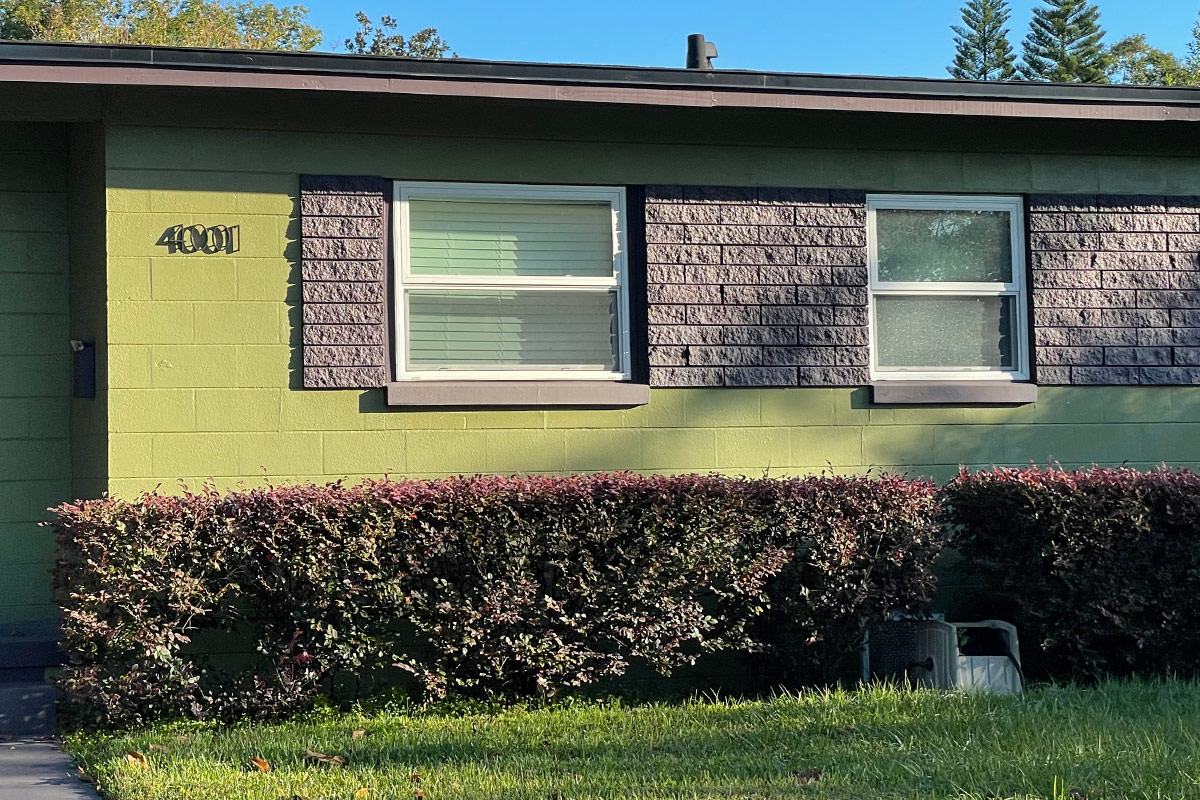Of all the historic residential styles that can be found around Central Florida, modest mid-century ranch homes are some of my favorites. There are many gems in the 1950s Orlando neighborhood where I live and one of the details I notice most often is the diversity of shutter designs. Some houses have them, some don’t. Some are your run-of-the-mill fake wood shutters, and some are absolute #ShudderSunday train wrecks.

There’s no shortage of awkward shutter choices around, so I wasn’t terribly surprised when I learned that @thecraftsmanblog's Scott Sidler — the undisputed king of ugly shutter shoutouts — lives here in Orlando.
There’s one mid-century shutter trend though that really fascinates me. I can’t find much information online about them, but shutter-like masonry details are common in many of the mid-century block homes in this area.
Bricks on Block
All of the photos here were taken in my neighborhood but I’ve noticed examples like them in other 1950s and 60s neighborhoods all over metro Orlando.

As you’ll see, each home has block exterior walls with a contrasting masonry material (often brick) flanking the window opening to mimic traditional shutters. It’s clear that the purpose is to break the block surface up a bit, to add some texture, and make the windows appear larger.

Many of our local mid-century homes have a brick or contrasting block accent wall. Those are common in current residential home design as well, but I haven’t seen many examples of built-in faux block shutters. Sometimes it works ok, but in many cases, the result is just plain ugly.

What boggles my mind is that architects decided to permanently build these design details into the wall structure itself. These are not thin brick veneers, they’re actual block, set into the wall to frame the sides of the rough widow openings.

Because these aren’t real fake shutters, you can’t fault them for being taller, shorter, or narrower than the window opening. They simply exist to elicit the idea of a shutter.

Ok, maybe you can fault them. As a designer, the height of the 2 examples above make my eye twitch.
Blocks on Block
Once you free your mind from the functional purpose of shutters, you can start to appreciate the visual contrast these details create.

That appreciation depends heavily, of course, on paint choices. 🍋

When treated as a subtle architectural detail, they do add a bit of visual interest, depth, and charm. Don’t get me started on awnings though.

A Stripe of Texture
Sometimes the faux shutters connect together, forming a stripe across the block exterior. Again, it wouldn’t be Florida without some questionable color choices, but I can really appreciate the connected faux shutter look.

That horizontal accent stripe approach works well when the window heights line up, and not so well when when they don’t.

The contrast in texture alone can provide plenty of visual interest. I’ve noticed several houses where these architectural details are painted to match the surrounding wall.

And also several truly bizarre designs where it probably should be painted to match.

What do you think? Are these abstract visual elements something that should be celebrated and preserved? Is it acceptable to consider a poorly designed masonry faux shutter a #ShutterFail? Have you seen anything like this in other cities or is it truly a regional mid-century trend?

Our 1952 home in Redington Beach has these ugly brick faux shutters!
Sorry Jan, I guess it was a popular trend for Florida homes in the 50s. As perplexed as I am by these shutter-like accents, I’d accept them with a house anywhere along Sand Key. ️
I’m actually thinking of removing the old worn out shutters on my 50’s bungalow and replacing with masonry. Found your article whole looking for inspiration, which there isn’t much of! Orlando area. Should I not? Haha.
Thanks for the comment, Heather! It’s a shame there isn’t more documentation about the masonry shutter style. I’m not completely anti-shutter and think you should replace yours with whatever makes you happy and works best for your place. There’s plenty of great-looking shutter inspiration out there.
My house has these faux masonry shutters and I can’t stand them! (Tampa Bay Florida) I was Googling ideas to cover them or do something creative over them and found this article. I wish they were just plaster shutters you could pry off but nooo like the article says they’re built into the house/masonry. I’m looking into buying wood panel shutters from Lowes to try and cover these for an updated look. Not sure if it can be done but looking into it.